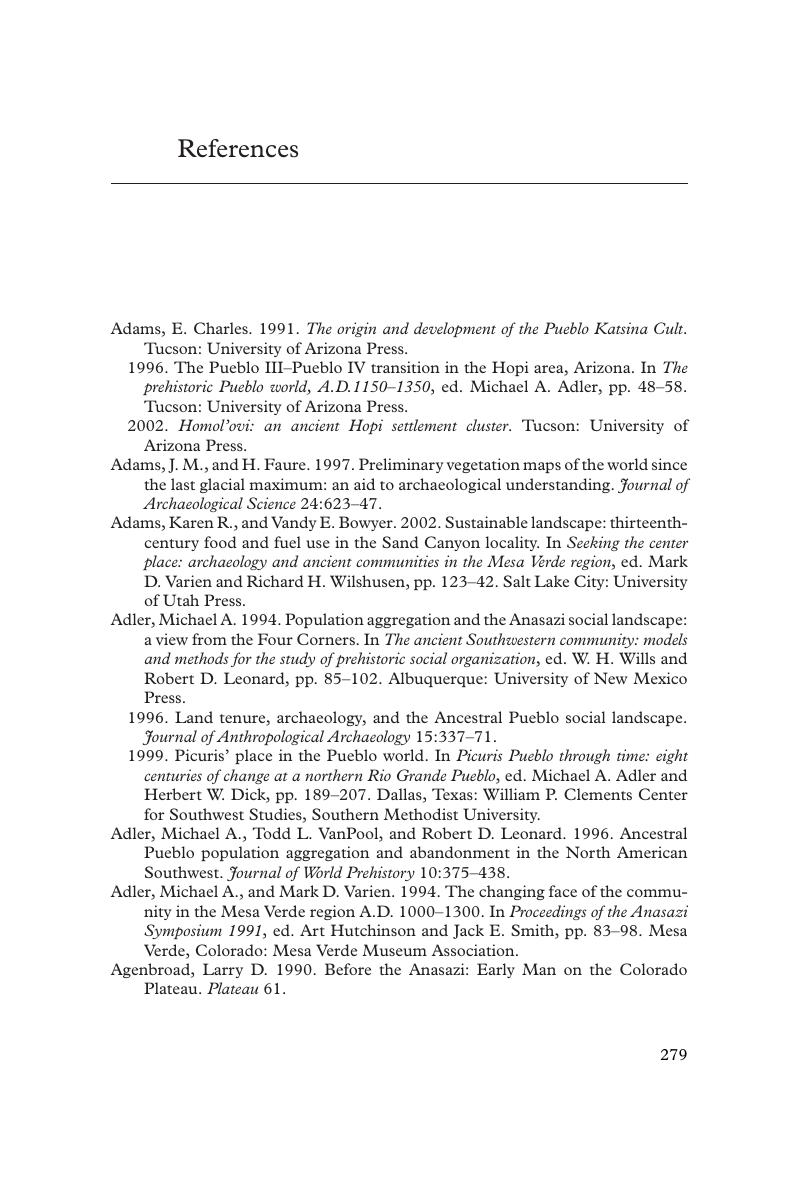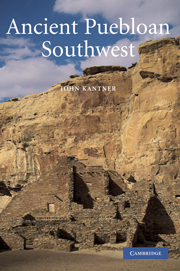Book contents
- Frontmatter
- Contents
- List of figures
- List of boxes
- Acknowledgments
- 1 The ancient Puebloan Southwest: an introduction
- 2 “The Daylight World”: the paleoenvironmental context for Puebloan history
- 3 Return to Ánosin Téhuli? The origins of Puebloan culture
- 4 The wrong Middle Places? Chaco Canyon and the Mimbres Mogollon
- 5 The migrations continue: the end of Chaco and Mimbres
- 6 The AD 1200s: the Great Pueblo period
- 7 The Great Abandonment
- 8 Finding Posi: the protohistoric Puebloan world
- References
- Index
- References
References
Published online by Cambridge University Press: 05 February 2015
- Frontmatter
- Contents
- List of figures
- List of boxes
- Acknowledgments
- 1 The ancient Puebloan Southwest: an introduction
- 2 “The Daylight World”: the paleoenvironmental context for Puebloan history
- 3 Return to Ánosin Téhuli? The origins of Puebloan culture
- 4 The wrong Middle Places? Chaco Canyon and the Mimbres Mogollon
- 5 The migrations continue: the end of Chaco and Mimbres
- 6 The AD 1200s: the Great Pueblo period
- 7 The Great Abandonment
- 8 Finding Posi: the protohistoric Puebloan world
- References
- Index
- References
Summary

- Type
- Chapter
- Information
- Ancient Puebloan Southwest , pp. 279 - 313Publisher: Cambridge University PressPrint publication year: 2004



